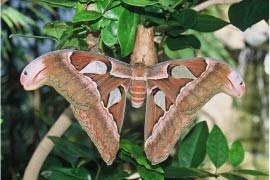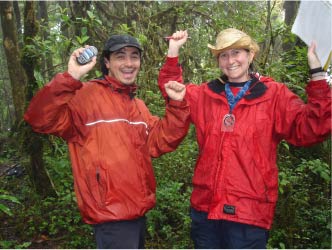
Rebecca Snell
University of Toronto, Faculty of Forestry
 |
Rebecca Snell University of Toronto, Faculty of Forestry |
I am interested in how plant-animal interactions will affect our current understanding of the impacts of climate change on vegetation. Generally, current vegetation simulation models consider seed dispersal in one of three ways.
I am incorporating a mechanistic representation of seed dispersal into a vegetation-climate model (LPJ-GUESS). The model will simulate relalistic dispersal limitations that will aid in our estimations and understanding of migration rates under rapid climate change scenarios. |
||
|
||
|
|
|
 Carlos and Rebecca, Chelemha |
|
|
|
|
|